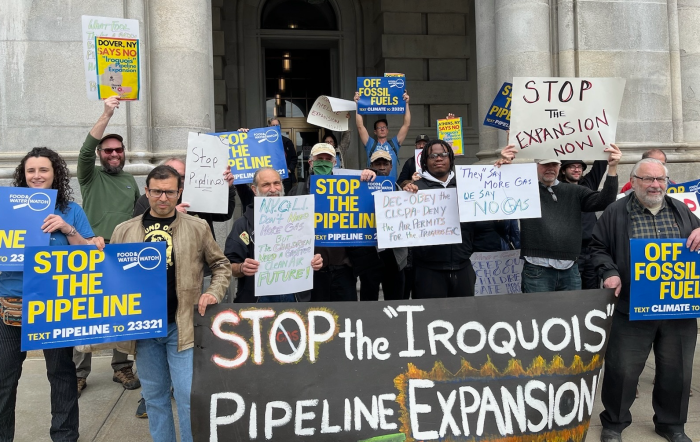
Mayor Bill de Blasio and other city officials said Monday more time is needed to fully implement the city’s latest superstorm Sandy recovery and rebuilding efforts.
The mayor met with Staten Island Borough President James Oddo and other elected officials from the borough Monday to discuss plans to speed up programs and financial aid that is supposed to go to the affected neighborhoods, particularly the Build it Back Program.
Last week Kathryn Mallon, the director of Build it Back, unexpectedly resigned. Very little of the program’s $648 million in funding has been doled out to the thousands of applicants and no home damaged in the Oct. 29, 2012 storm has been rebuilt through the initiative.
The mayor acknowledged the difficulties and promised to deliver a more efficient and clear plan.
“All levels of government have to do better,” he said at a Staten Island news conference following the closed-door meeting with officials.
Although de Blasio said he will be releasing a more detailed and updated Sandy recovery plan in the next few weeks, he didn’t give an exact date or details.
That didn’t sit well with the dozens of Sandy victims and relief groups who packed the steps of City Hall before de Blasio’s announcement. Many in attendance noted that de Blasio toured the Sandy-affected areas when he was campaigning and promised to make rebuilding a top priority.
Bennett Davon Bennett recalled how the mayor visited his family’s home in the Rockaways in the fall and urged him to keep to his word since the house may have to be razed.
“We as a community are waiting for Mayor de Blasio to keep his commitment,” he said.
Father Fulgencio Guitierrez, of St. Mary Star of the Sea & St. Gertrude Parish in Far Rockaway, said pushing Sandy rebuilding efforts would be an asset to the mayor’s fight against inequality because not only would it provide his community with better infrastructure, it would create hundreds of jobs.
“Now, de Blasio can use this opportunity to end the tale of two cities in the five boroughs,” he said.
When asked about criticism from the residents that he visited, the mayor said to be patient just a little while longer.
“I don’t blame anyone who’s frustrated. I would say to them, I think fairly and objectively, when our plan comes out soon, judge that,” he said.
Here are some of the other major facilities and infrastructure that aren’t back to 100% operation because of damage from Superstorm Sandy.
Ellis Island: Although the site is open daily to visitors, half of the former immigration processing center is off limits due to ongoing Sandy repairs. Mindy Rambo, a spokeswoman for the National Park Service, which manages the island, said the floors that house its artifacts need special AC and heating units.
“Until those are repaired, the delicate historical items can’t be returned because they have to be in a certain temperature and humidity,” she said.
Rockaway Boardwalk: Construction on the five miles of boardwalk will begin next week, and the city’s parks department said it will be opening up in sections over the next few years. Liam Kavanagh, a first deputy parks commissioner, said the boardwalk will be concrete instead of wood to ensure it withstands future storms. What’s more, the boardwalk supports will be steel rather than concrete.
“It is something we think will be there for the long haul,” he said.
The first section of the boardwalk is slated to open on Memorial Day weekend 2015, and the entire walkway is expected to be open for business in 2017.
Subways: The Montague tunnel, which connects the R train between Brooklyn and Manhattan, will be closed until October while MTA crews repair the Sandy damage. And the work won’t end there.
Earlier this month, the agency announced that it will shut down the Cranberry tunnel, which connects the A and C lines between the two boroughs, and the Rutgers tunnel, which connects the F line between Brooklyn and Manhattan, sometime after work on the Montague tunnel is done.
Although no timetable is set for the repairs, the MTA said work will only be on weekends.

















